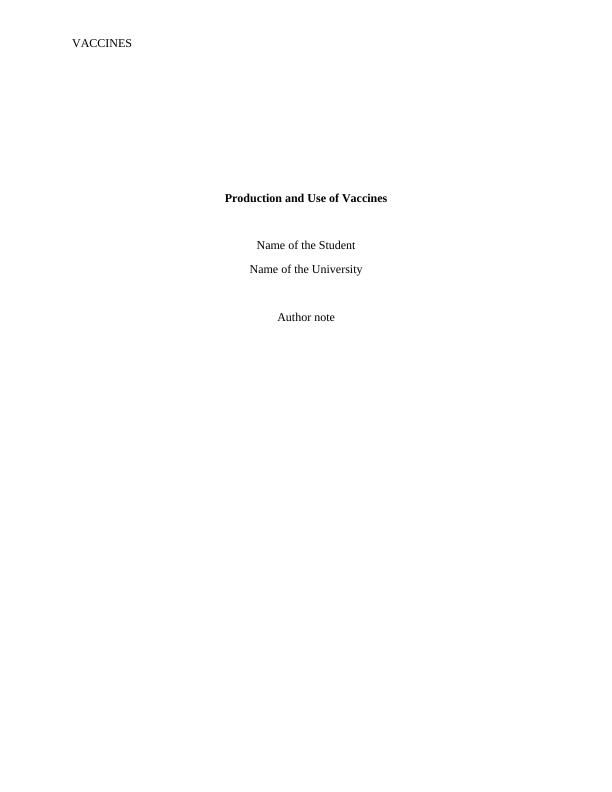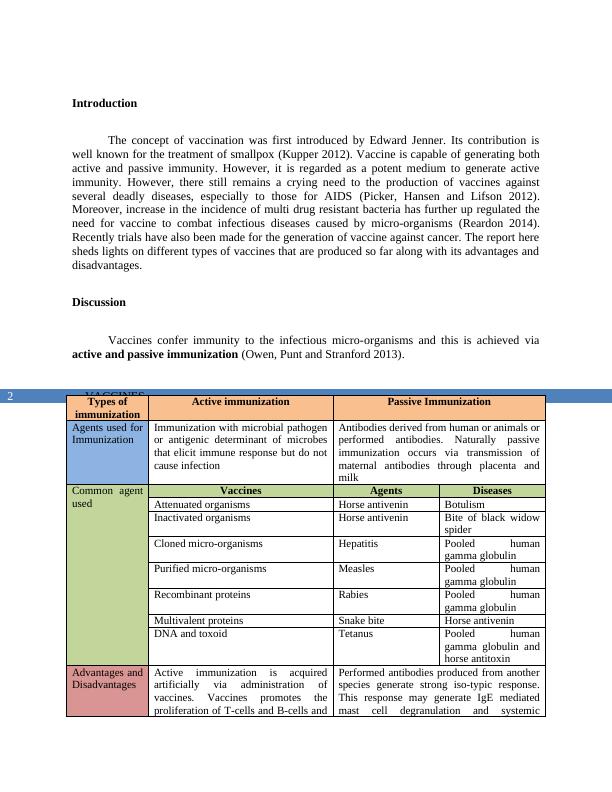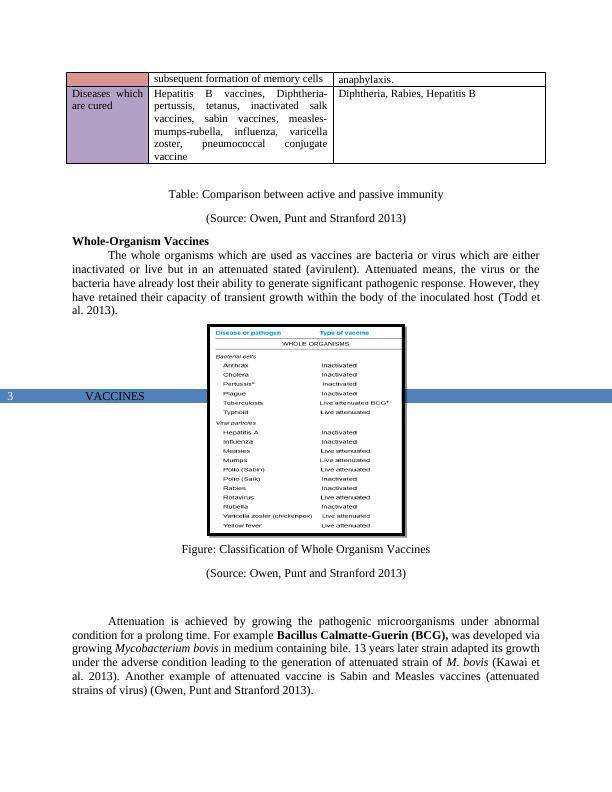Ask a question from expert
Production and Use of Vaccines (Doc)
11 Pages2659 Words96 Views
Added on 2020-04-21
Production and Use of Vaccines (Doc)
Added on 2020-04-21
BookmarkShareRelated Documents
VACCINESProduction and Use of VaccinesName of the StudentName of the UniversityAuthor note

VACCINES1Table of ContentsIntroduction......................................................................................................................................2Discussion........................................................................................................................................2Whole-Organism Vaccines..........................................................................................................3Purified Macromolecule Vaccines...............................................................................................4Bacterial Polysaccharide Capsules..........................................................................................5Bacterial Exotoxin Vaccines....................................................................................................5Synthetic Peptide Vaccines......................................................................................................5Recombinant Vector Vaccines....................................................................................................5DNA Vaccine...............................................................................................................................6Multivalent subunit vaccine.........................................................................................................7Conclusion.......................................................................................................................................8References........................................................................................................................................9

VACCINES2IntroductionThe concept of vaccination was first introduced by Edward Jenner. Its contribution iswell known for the treatment of smallpox (Kupper 2012). Vaccine is capable of generating bothactive and passive immunity. However, it is regarded as a potent medium to generate activeimmunity. However, there still remains a crying need to the production of vaccines againstseveral deadly diseases, especially to those for AIDS (Picker, Hansen and Lifson 2012).Moreover, increase in the incidence of multi drug resistant bacteria has further up regulated theneed for vaccine to combat infectious diseases caused by micro-organisms (Reardon 2014).Recently trials have also been made for the generation of vaccine against cancer. The report heresheds lights on different types of vaccines that are produced so far along with its advantages anddisadvantages.DiscussionVaccines confer immunity to the infectious micro-organisms and this is achieved viaactive and passive immunization (Owen, Punt and Stranford 2013).Types ofimmunizationActive immunizationPassive ImmunizationAgents used forImmunizationImmunization with microbial pathogenor antigenic determinant of microbesthat elicit immune response but do notcause infection Antibodies derived from human or animals orperformed antibodies. Naturally passiveimmunization occurs via transmission ofmaternal antibodies through placenta andmilkCommon agentusedVaccinesAgentsDiseasesAttenuated organismsHorse antiveninBotulismInactivated organismsHorse antiveninBite of black widowspiderCloned micro-organismsHepatitisPooledhumangamma globulinPurified micro-organismsMeaslesPooledhumangamma globulinRecombinant proteinsRabiesPooledhumangamma globulinMultivalent proteinsSnake biteHorse antiveninDNA and toxoidTetanusPooledhumangamma globulin andhorse antitoxinAdvantages andDisadvantagesActive immunization is acquiredartificially via administration ofvaccines. Vaccines promotes theproliferation of T-cells and B-cells andPerformed antibodies produced from anotherspecies generate strong iso-typic response.This response may generate IgE mediatedmast cell degranulation and systemic

VACCINES3subsequent formation of memory cellsanaphylaxis. Diseases whichare cured Hepatitis B vaccines, Diphtheria-pertussis, tetanus, inactivated salkvaccines, sabin vaccines, measles-mumps-rubella, influenza, varicellazoster, pneumococcal conjugatevaccineDiphtheria, Rabies, Hepatitis BTable: Comparison between active and passive immunity(Source: Owen, Punt and Stranford 2013)Whole-Organism VaccinesThe whole organisms which are used as vaccines are bacteria or virus which are eitherinactivated or live but in an attenuated stated (avirulent). Attenuated means, the virus or thebacteria have already lost their ability to generate significant pathogenic response. However, theyhave retained their capacity of transient growth within the body of the inoculated host (Todd etal. 2013). Figure: Classification of Whole Organism Vaccines(Source: Owen, Punt and Stranford 2013)Attenuation is achieved by growing the pathogenic microorganisms under abnormalcondition for a prolong time. For example Bacillus Calmatte-Guerin (BCG), was developed viagrowing Mycobacterium bovis in medium containing bile. 13 years later strain adapted its growthunder the adverse condition leading to the generation of attenuated strain of M. bovis (Kawai etal. 2013). Another example of attenuated vaccine is Sabin and Measles vaccines (attenuatedstrains of virus) (Owen, Punt and Stranford 2013).

End of preview
Want to access all the pages? Upload your documents or become a member.
Related Documents
Viral Vaccines Louis Pasteurlg...
|11
|2224
|50
Traditional Method vs Biotechnological Methodslg...
|6
|1108
|19
Human Immunology Course 2022lg...
|6
|1369
|19